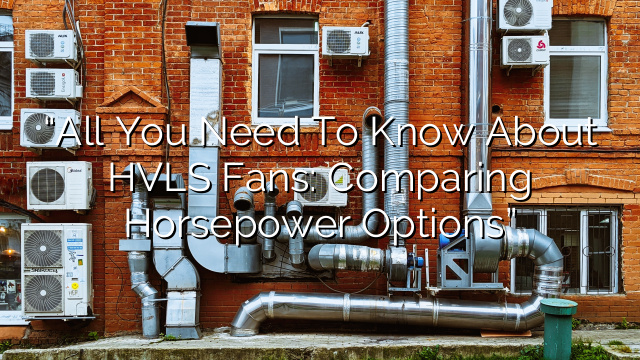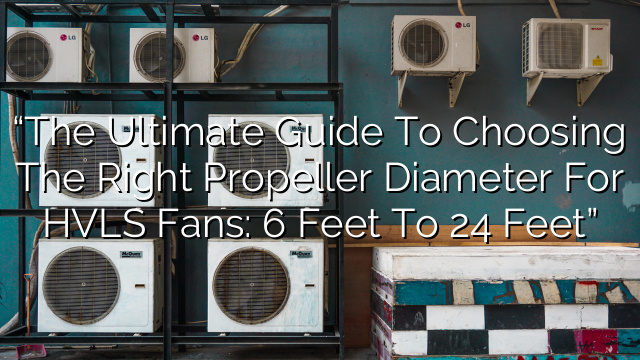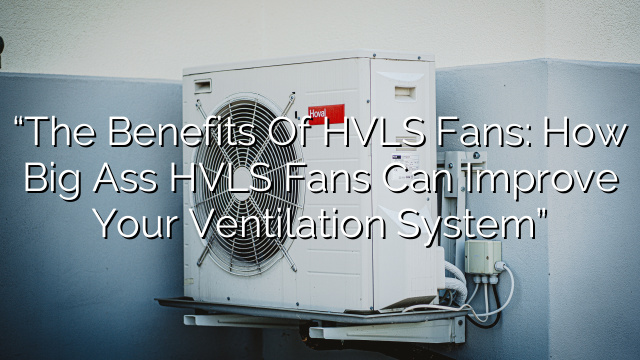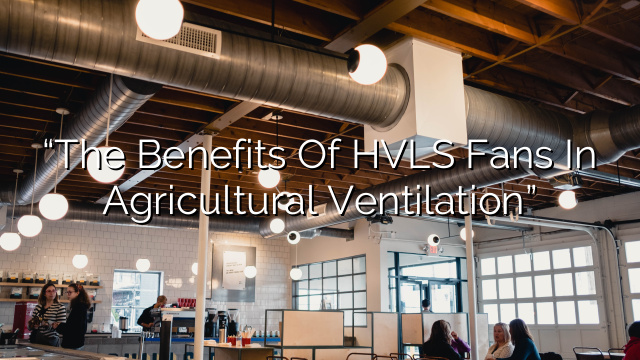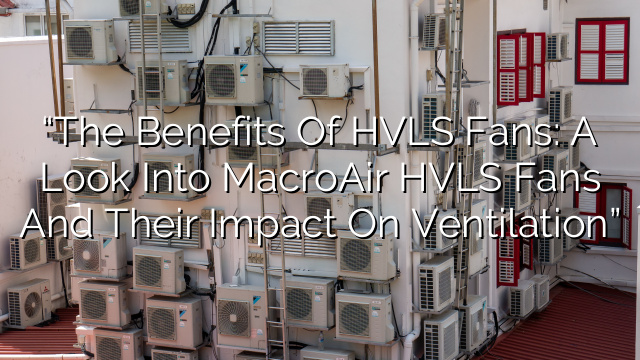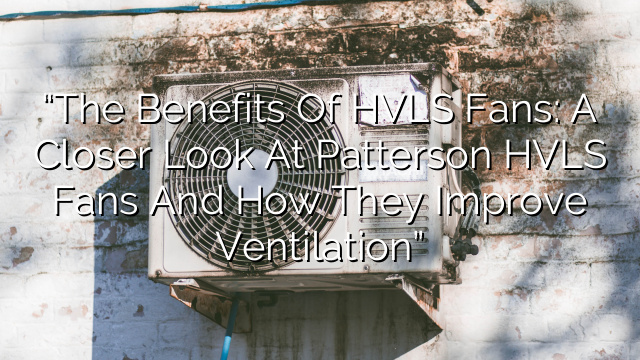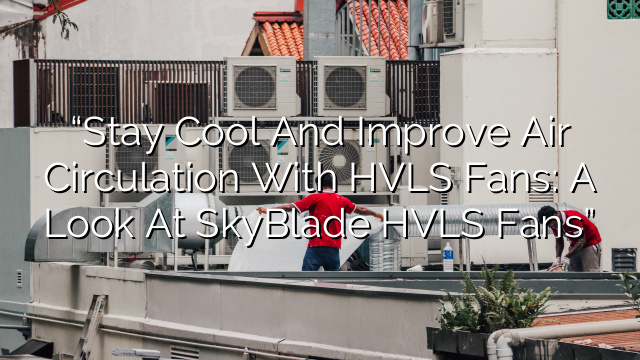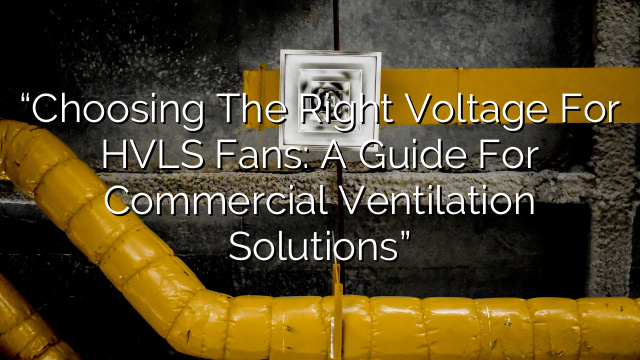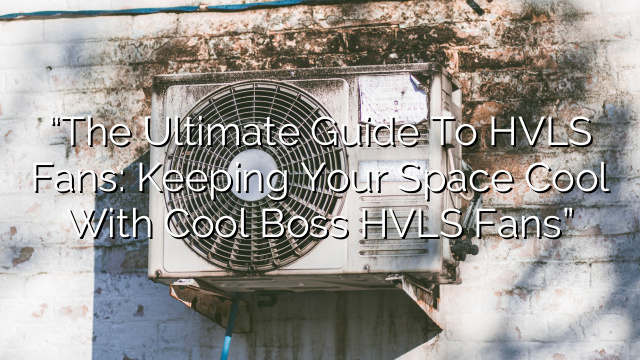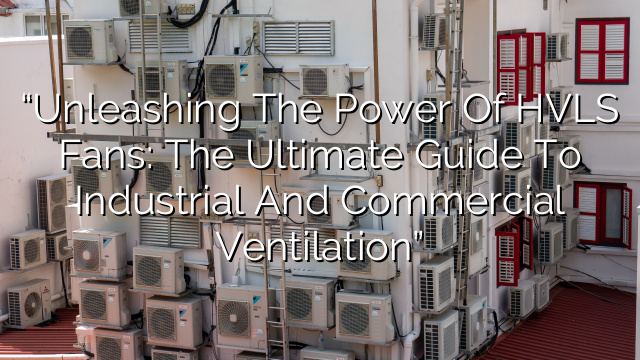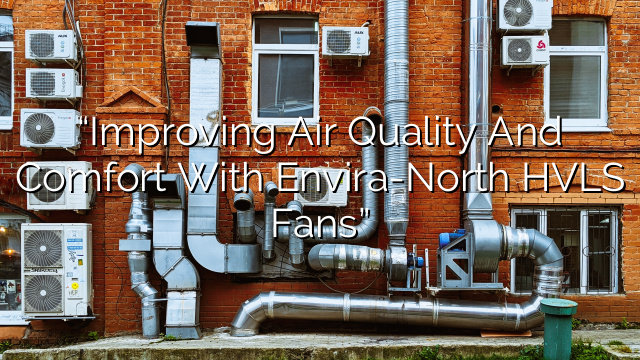When it comes to large spaces like warehouses, factories, and commercial buildings, proper ventilation is key. High volume, low speed (HVLS) fans have become popular solutions for these spaces, as they provide excellent air circulation and cooling at a fraction of the energy cost compared to traditional fans. However, deciding on the right HVLS fan for your space can be daunting, especially when it comes to choosing the appropriate horsepower. In this article, we will break down the different horsepower options available for HVLS fans and help you make an informed decision.
1. Understanding HVLS Fans
HVLS fans are large ceiling fans that are designed to move large volumes of air at low speeds. Unlike traditional fans, HVLS fans utilize longer and wider blades to create a gentle breeze that covers a wide area without causing uncomfortable drafts. These fans are typically used in large spaces like warehouses, gymnasiums, airports, and manufacturing facilities.
2. Importance of Horsepower
When it comes to HVLS fans, the horsepower (HP) rating is an important consideration. The horsepower of a fan indicates its motor power and determines its ability to move air effectively. Choosing the right horsepower is crucial for ensuring optimal airflow and cooling in your space.
3. Comparing Horsepower Options
Here is a breakdown of the different horsepower options available for HVLS fans and their corresponding applications:
a) .05 HP
These low horsepower fans are suitable for smaller spaces or areas where the cooling requirements are minimal. They are commonly used in small offices or retail shops. While they may not provide as much airflow as higher horsepower options, they are energy-efficient and can still make a noticeable difference in smaller spaces.
b) .625 HP
This horsepower rating is often found in HVLS fans designed for residential use or small commercial spaces. They are capable of moving a moderate amount of air and can effectively cool rooms with average ventilation needs.
c) 1 HP
Fans with a 1 HP rating are ideal for larger commercial and industrial spaces. They can move a significant amount of air and provide effective cooling in areas with high heat loads. These fans are commonly used in warehouses, manufacturing facilities, and gyms.
d) 1.5 HP
For spaces with more demanding cooling requirements, such as large manufacturing facilities or distribution centers, fans with a 1.5 HP rating are a good choice. These fans can provide powerful airflow and maintain comfortable temperatures even in spaces with high heat loads.
e) 2 HP
HVLS fans with a 2 HP rating are heavy-duty options designed for the most challenging ventilation needs. They are commonly used in large industrial spaces, such as foundries or automotive plants. These fans can move a massive amount of air and effectively cool even the hottest environments.
f) 3/4 HP
While not as common as other horsepower options, fans with a 3/4 HP rating can be suitable for certain applications. They are often used in smaller commercial spaces or residential settings where moderate air movement is needed.
4. Choosing the Right Horsepower
When selecting an HVLS fan for your space, it’s important to consider the following factors:
- The size and height of your space
- The desired airflow and cooling requirements
- The presence of heat-generating equipment or processes
- The climate and temperature conditions in your area
Based on these considerations, you can determine the appropriate horsepower for your HVLS fan. It’s always advisable to consult with a professional or the manufacturer to ensure you choose the right fan for your specific needs.
FAQs
- What is the difference between high speed and high volume fans?
High-speed fans operate at higher rotations per minute (RPM) and focus on creating a direct breeze. High volume fans, on the other hand, move large volumes of air at low speeds to create a gentle breeze that covers a wide area without creating uncomfortable drafts.
- Are HVLS fans energy-efficient?
Yes, HVLS fans are highly energy-efficient. Due to their large size and slow rotational speed, they consume significantly less energy compared to traditional fans while still providing effective cooling and air circulation.
- Can HVLS fans be used outdoors?
Yes, there are HVLS fans specifically designed for outdoor use. These fans are built to withstand harsh weather conditions and can provide cooling and ventilation in open-air spaces, such as outdoor dining areas or events.
- Do HVLS fans require any maintenance?
Regular maintenance of HVLS fans is recommended to ensure their optimal performance. This may include cleaning the blades, checking for any loose connections, and lubricating the motor as necessary. It is best to refer to the manufacturer’s guidelines for specific maintenance instructions.

